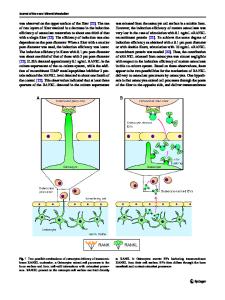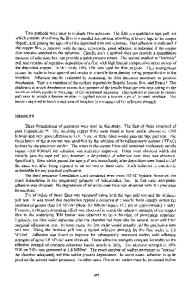Solution-Based Precursor Delivery for Copper CVD
- PDF / 50,408 Bytes
- 5 Pages / 612 x 792 pts (letter) Page_size
- 41 Downloads / 323 Views
Solution-Based Precursor Delivery for Copper CVD Lidong Wang and Gregory L. Griffin Department of Chemical Engineering, Louisiana State University Baton Rouge, LA 70803-7303 ABSTRACT We have measured growth rates and film properties for copper CVD using Cu(hfac)2 dissolved in isopropanol as the precursor delivery method. This approach offers the convenience and control associated with liquid precursor delivery, while avoiding the need to handle the precursor at its high melting point. The method provides similar growth rates to those observed using conventional delivery by solid sublimation, with the additional benefit that these growth rates are achieved using a much lower partial pressure of precursor in the reactor. The growth rate is nearly independent of the partial pressure of Cu(hfac)2, isopropanol, and H2 over the range of operating conditions examined. The film morphology and resistivity are also largely unaffected by the deposition conditions. These results strongly suggest that the mechanism proceeds via an adsorbed intermediate formed by the reaction of Cu(hfac)2 and isopropanol, and that the surface is nearly fully saturated by this intermediate.
INTRODUCTION There have been numerous reports over the years that alcohols can function as enhancement agents for the chemical vapor deposition of copper films when using Cu(hfac)2 as the reactant. Early papers attributed the enhancement to a solvent-induced increase in the mass transport rate of the low volatility Cu(hfac)2 precursor. Pilkington et al. first reported that dissolving Cu(hfac)2 in ethanol or propanol increases both the rate and uniformity of deposition, relative to sublimation of the solid precursor alone [1]. They proposed that the improved growth rates were caused by solvent-enhanced transport of the precursor leaving the evaporator, leading to a higher concentration of Cu(hfac)2 in the reactor. Chiang et al. reported that Cu(hfac)2:alcohol adducts are substantially more volatile than the pure precursor, thus increasing the delivery rate of solvent-coordinated complexes to the substrate [2]. On the other hand, several authors have proposed that the enhancement originates from kinetic factors. Cho (1992) disclosed that the rate enhancement could be achieved using coevaporated Cu(hfac)2 and alcohol vapor (i.e., it was not necessary to prepare the reactants in solution form) [3]. Both Cho and Pilkington reported that the alcohol co-reactant also improved the quality of the film, which both groups interpreted as evidence that alcohol was involved in the intrinsic reaction mechanism [2,3]. Borgharkar et al. examined the mass transport behavior of Cu(hfac)2/alcohol mixtures explicitly [4]. In one group of thermogravimetric analysis experiments, they found that various Cu(hfac)2:alcohol adducts actully had a lower evaporation rate than pure Cu(hfac)2, and that evaporation eventually occured via ligand dissociation of adduct. A second set of transpiration experiments showed the rate of Cu(hfac)2 evaporation achieved by bubbling H2 carrier gas through
Data Loading...











